Explore web search results related to this domain and discover relevant information.
Federal office holders, including senators and representatives, cannot be electors. Additionally, the Twenty-third Amendment granted the federal District of Columbia three electors (bringing the total number from 535 to 538). A simple majority of electoral votes (270 or more) is required to ...
Federal office holders, including senators and representatives, cannot be electors. Additionally, the Twenty-third Amendment granted the federal District of Columbia three electors (bringing the total number from 535 to 538). A simple majority of electoral votes (270 or more) is required to elect the president and vice president.The states and the District of Columbia hold a statewide or district-wide popular vote on Election Day in November to choose electors based upon how they have pledged to vote for president and vice president, with some state laws prohibiting faithless electors.All states except Maine and Nebraska use a party block voting, or general ticket method, to choose their electors, meaning all their electors go to one winning ticket. Maine and Nebraska choose one elector per congressional district and two electors for the ticket with the highest statewide vote.Winner-take-all systems, especially with representation not proportional to population, do not align with the principle of "one person, one vote". Critics object to the inequity that, due to the distribution of electors, individual citizens in states with smaller populations have more voting power than those in larger states.Because the number of electors each state appoints is equal to the size of its congressional delegation, each state is entitled to at least three electors regardless of its population, and the apportionment of the statutorily fixed number of the rest is only roughly proportional. This allocation has contributed to runners-up of the nationwide popular vote being elected president in 1824, 1876, 1888, 2000, and 2016.

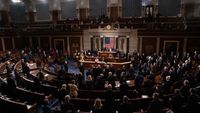
When Congress gathers on January 6 to count and certify the electoral votes, it’s likely to be a much less dramatic affair in 2025 than it was in 2021, simply because President-elect Donald Trump won the election and is not contesting the results.
His Democratic opponent, Vice President Kamala Harris, is also respecting the will of voters this year. Another contributor to the less dramatic Electoral College meetings this year is that Congress came together in 2022 to pass a bipartisan law, the Electoral Count Reform Act, clarifying how exactly the process should work and making it harder to dispute the results.The 538 electors are equal to the number of US senators (100), House members (435) and three additional electors for voters in Washington, DC. The number of electoral votes each state gets can change after the census every 10 years.They all sign six copies of a Certificate of Vote that’s attached to six copies of the Certificates of Ascertainment, which are also then sent to the Archives. In addition to setting those December dates in stone, the new law requires that slates of electors must be selected on Election Day and that procedures for selecting electors, which vary by law from state to state, must be in place before Election Day.Also, while some states have laws that require the electors to support the winner of the popular vote in their state, not all do. Occasionally, electors go rogue and support someone other than their candidate.
The Founding Fathers established it in the Constitution, in part, as a compromise between the election of the President by a vote in Congress and election of the President by a popular vote of qualified citizens. What is the process? The Electoral College process consists of the selection of ...
The Electoral College is a process, not a place. The Founding Fathers established it in the Constitution, in part, as a compromise between the election of the President by a vote in Congress and election of the President by a popular vote of qualified citizens.The Electoral College consists of 538 electors. A majority of 270 electoral votes is required to elect the President. Your State has the same number of electors as it does Members in its Congressional delegation: one for each Member in the House of Representatives plus two Senators.The slates are generally chosen by the candidate’s political party in your State, but State laws vary on how the electors are selected and what their responsibilities are. Read more about the qualifications of the electors and restrictions on who the electors may vote for.However, Maine and Nebraska each have a variation of “proportional representation.” Read more about the allocation of electors among the States. After the general election, your State's Executive prepares a Certificate of Ascertainment listing the names of all the individuals on the slates for each candidate. The Certificate of Ascertainment also lists the number of votes each individual received and shows which individuals were appointed as your State's electors.

Track the 2026 Senate election with a red/blue map of the US updated daily using the latest state polls.
[email protected] For questions about politics, civics, history, [email protected] For "letters to the editor" for possible publication on a [email protected] To tell us about typos or factual errors we should [email protected] For general suggestions, ideas, etc.
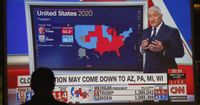
It’s the Electoral College, not the national popular vote, that determines who wins the presidency.
It remains one of the most surprising facts about voting in the United States: While the popular vote elects members of Congress, mayors, governors, state legislators and even more obscure local officials, it does not determine the winner of the presidency, the highest office in the land. That important decision ultimately falls to the Electoral College.On Dec. 14, as electors gathered across the country to cast their ballots, Joseph R. Biden Jr. had earned 306 electoral votes, 36 more than needed to win. President Trump had earned 232 electoral votes. Mr. Biden was leading in the popular vote, with more than 81 million votes.More than 74 million votes had been counted for Mr. Trump. The New York Times called the last two states on its map on Nov. 13: Georgia’s 16 electoral votes for Mr. Biden and North Carolina’s 15 for Mr.Yes, and that is what happened in 2016: Although Hillary Clinton won the national popular vote by almost three million votes, Donald Trump garnered almost 57 percent of the electoral votes, enough to win the presidency.

Joseph R. Biden Jr. was elected the 46th president of the United States. Mr. Biden defeated President Trump after winning Pennsylvania, which put his total of Electoral College votes above the 270 he needed to clinch the presidency.
A mob of people loyal to President Trump stormed the Capitol, halting Congress’s counting of the electoral votes to confirm President-elect Joseph R. Biden Jr.’s victory.Joseph R. Biden Jr. has received a majority of votes from the Electoral College, formally securing the presidency in the manner set out in the Constitution.Joseph R. Biden Jr. was elected the 46th president of the United States. See full results and maps from the 2020 presidential election.The 538 members of the Electoral College are meeting to cast ballots for president based on the election results in their states, formalizing Joseph R. Biden Jr.’s victory.
First, voters cast ballots on Election Day in each state. In nearly every state, the candidate who gets the most votes wins the "electoral votes" for that state, and gets that number of voters (or "electors") in the "Electoral College."
How exactly does this work? Under the "Electoral College" system, each state is assigned a certain number of "votes". There are a total of 538 electoral votes, and the number of votes each state receives is proportional to its size --- the bigger the state's population the more "votes" it gets.For California, this means we get 54 votes (2 senators and 52 members of the House of Representatives) --- the most of any state. On or before October 1 of the presidential election year, each party's nominee must file a list containing the names, addresses, and telephone numbers of the 54 electors pledges to him/her.No incumbent Senators, congressional representatives or persons holding an office of trust or profit of the United States can serve as electors. The House of Representatives makes the decision with each state having one vote. Representatives of at least two-thirds of the states must be present for the vote.Second, the "electors" from each of the 50 states gather in December and they vote for president.
The founders hoped this rule would prevent the largest states from dominating presidential elections.Maine and Nebraska employ a “district system” in which two at-large electors vote for the winner of the state’s popular vote and one elector votes for the popular winner in each congressional ...
Established in Article II, Section 1 of the U.S. Constitution, the Electoral College is the formal body which elects the President and Vice President of the United States. Each state has as many "electors" in the Electoral College as it has Representatives and Senators in the United States Congress, and the District of Columbia has three electors.Each state has as many "electors" in the Electoral College as it has Representatives and Senators in the United States Congress, and the District of Columbia has three electors. When voters go to the polls in a Presidential election, they actually vote for the slate of electors who have vowed to cast their ballots for that ticket in the Electoral College.Most states require that all electoral votes go to the candidate who receives the most votes in that state. After state election officials certify the popular vote of each state, the winning slate of electors meet in the state capital and cast two ballots—one for Vice President and one for President.Electors cannot vote for a Presidential and Vice Presidential candidate who both hail from an elector’s home state. For instance, if both candidates come from New York, New York’s electors may vote for one of the candidates, but not both. In this hypothetical scenario, however, Delaware’s electors may vote for both New York candidates.

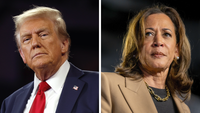
Vice President Kamala Harris and former President Donald Trump each need at least 270 electoral votes to win the presidency. Follow here for 2024 presidential election updates, results, analysis and more.
CNN has not yet called the race for the former president and votes are still being counted across several states, however according to CNN projections he only needs four more electoral votes to win the presidency.Vice President Kamala Harris will win one electoral vote in Nebraska, CNN projects, and Donald Trump won four electoral votes in Nebraska. There are five electoral votes at stake in Nebraska.Nebraska is one of only two states (Maine is the other) to allow its electoral votes to be split. Two of Nebraska’s five electoral votes go to the winner of the statewide vote.One electoral vote goes to the popular vote winner in each of the state’s three congressional districts. It takes at least 270 electoral votes to win the 2024 presidential election.

After the vote on Wednesday, California Governor Gavin Newsom wrote on X: "It's on, Texas." The new maps in Texas sparked uproar over gerrymandering - the redrawing of electoral boundaries to favour a political party - which is practised by both main parties and is legal unless ruled to be ...
After the vote on Wednesday, California Governor Gavin Newsom wrote on X: "It's on, Texas." The new maps in Texas sparked uproar over gerrymandering - the redrawing of electoral boundaries to favour a political party - which is practised by both main parties and is legal unless ruled to be racially motivated.Facing opposition from Democrats who fled the state to stall the vote, Republicans hope the new maps will lead to more seats in Congress.Republicans in the Texas House of Representatives passed the new voting lines in an 88-52 vote, creating five new Republican-leaning seats.It followed a two-week stand-off in which Democrats fled the state to stall the vote and rally supporters against the redistricting plans.

Congressional Democrats on Monday are expected to offer President-elect Donald Trump the unremarkable, perhaps even dull transfer of power he and a band of pro-Trump rioters denied President Joe Biden exactly four years ago.
The House of Representatives and Senate will meet, per federal law, at 1 p.m. ET for the counting of the electoral votes. This follows a process from December 17, when electors met in their respective states and cast votes for president and vice president. There were no “faithless electors,” or electors who cast ballots against the will of the voters, so Trump and Vice President-elect JD Vance each received 312 votes.Harris and Minnesota Gov. Tim Walz each received 226 votes. Going in alphabetical order, Harris in her role as president of the Senate will open each state’s certificate of electoral votes and hand them to one of the four “tellers” – a pair of them coming from both the House and Senate.This is the point in the process when members can challenge a state’s electoral votes. But for the objection to be heard, it must be submitted in writing and signed by at least one-fifth of the House and one-fifth of the Senate. That’s a higher bar than in past years, when only one member of the House and one Senator could pause the proceedings.During the debate, speaking time is limited to five minutes per House member or senator. Members can only address the chamber once before the votes begin. For an electoral vote to be thrown out, both the House and Senate must agree to sustain the objection. Again, this is considered highly unlikely.
A Michigan judge has dismissed criminal charges against 15 people who signed false certificates saying Donald Trump won the state's electoral votes in 2020.
Michigan judge tosses charges against 'fake electors' A Michigan judge has dismissed criminal charges against 15 people who signed false certificates saying Donald Trump won the state's electoral votes in 2020.Some pro-Trump 2020 electors have defended their actions by saying they were merely doing so in case Trump's challenges of the election were successful. In an appearance with reporters Tuesday, Nessel criticized the judge's ruling and stood by her prosecution. "The evidence was clear: They lied. They knew they lied," she said of the defendants. "And they tried to steal the votes of millions of Michiganders."As Nessel's office said in a statement in 2023: "These defendants are alleged to have met covertly in the basement of the Michigan Republican Party headquarters on December 14th [2020], and signed their names to multiple certificates stating they were the 'duly elected and qualified electors for President and Vice President of the United States of America for the State of Michigan.'"

When voters cast their vote for president and vice president, they are actually casting a vote for the slate of electors who has pledged their support for those candidates. In Hawaii, the names of the candidates for president and vice president are used on the general election ballot in place ...
When voters cast their vote for president and vice president, they are actually casting a vote for the slate of electors who has pledged their support for those candidates. In Hawaii, the names of the candidates for president and vice president are used on the general election ballot in place of the electors’ names.The votes cast for president and vice president determine which electors meet for Electoral College. The Electoral College is a body of electors who meet every presidential election to elect the next president and vice president of the United States.The chosen electors gather at the Electoral College in their respective states to cast their votes for president and vice president. The votes cast at the Electoral College are sent to the President of the Senate who reads them before a joint session of Congress on January 6 following the general election.The presidential ticket with the majority of votes is declared president and vice president. If no candidate receives a majority of electoral votes (i.e. 270 out of 538), the U.S. House of Representatives elects the president from the three (3) presidential candidates who received the most electoral votes.
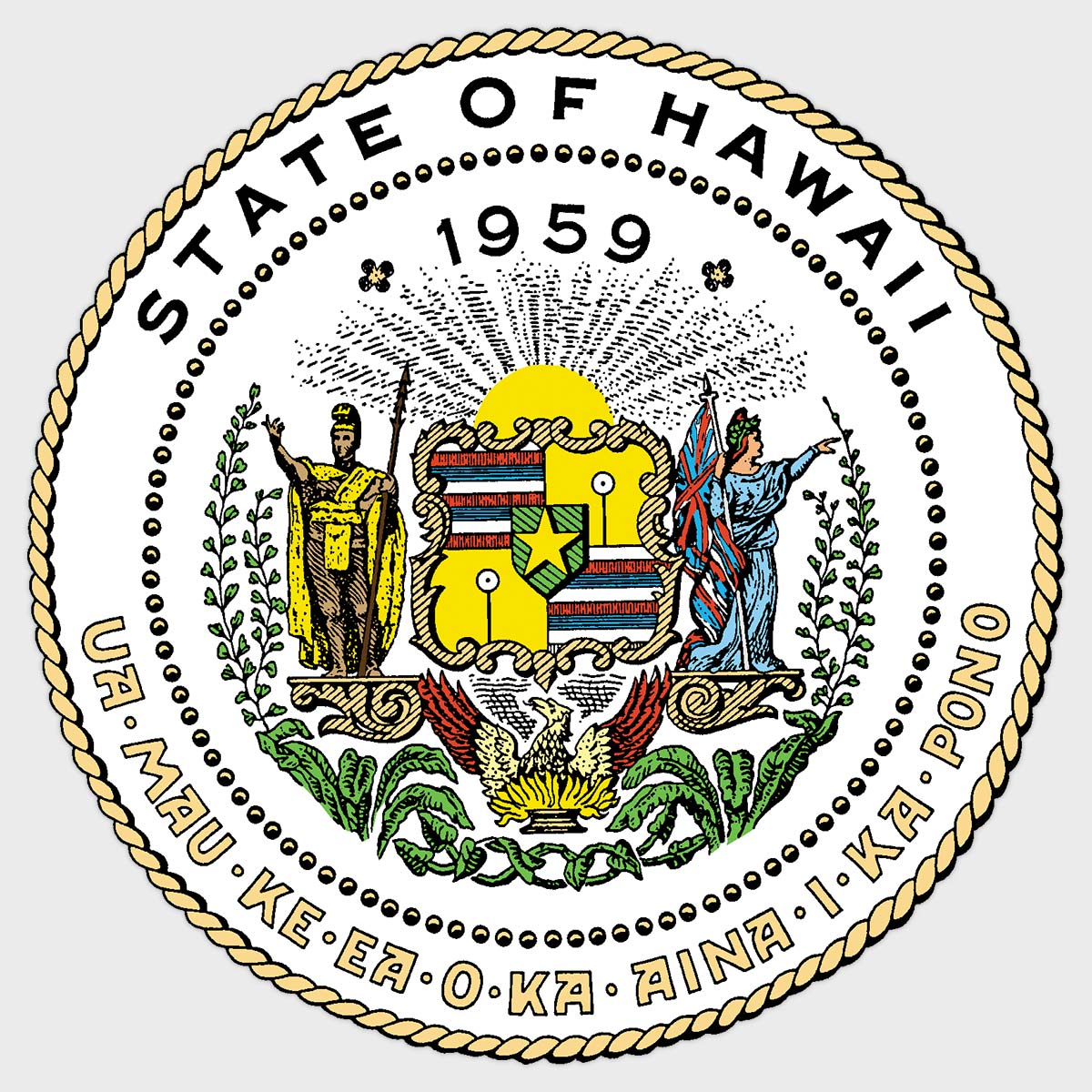

Register to vote to take part in elections in the UK. Includes how to get on the electoral register and how to update your address on the register.
You cannot register as an overseas voter if you’ve never lived in the UK - even if you’re a British or Irish citizen. Contact your electoral registration office if you cannot remember which address you were last registered at.You can get help registering from your electoral registration office. There’s an easy read guide about registering to vote.If you do not have photo ID that allows you to vote, you can apply for a Voter Authority Certificate. ... Contact your electoral registration office to find your polling station or to find out what to do if you have accessibility needs.opt out of the ‘open’ register - the version of the electoral register that’s available for anyone to buy · update your name, address or nationality by registering again with your new details (if you live in the UK) You can check if you’re already registered to vote by contacting your electoral registration office.
The Electoral College is not a physical place. It is a process which includes the: ... In other U.S. elections, candidates are elected directly by popular vote. But the president and vice president are not elected directly by citizens.
Each state gets as many electors as it has members of Congress (House and Senate). Including Washington, D.C.’s three electors, there are currently 538 electors in all. Find out how many electoral votes each state gets.Each state’s political parties choose their own slate of potential electors. Who is chosen to be an elector, how, and when varies by state. Learn more about how electors are chosen. After you cast your ballot for president, your vote goes to a statewide tally.Maine and Nebraska assign their electors using a proportional system. A candidate needs the vote of at least 270 electors—more than half of all electors—to win the presidential election.While the Constitution does not require electors to vote for the candidate chosen by their state's popular vote, some states do. The rare elector who votes for someone else may be fined, disqualified, and replaced by a substitute elector.


The vice president presided over Congress on Monday as it counted the Electoral College votes finalizing her defeat by Donald J. Trump.
Standing in the rostrum of the House of Representatives, a gavel in her hand and a look of imperturbable stoicism on her face, Ms. Harris officiated as the two houses of Congress met in joint session to formally count the Electoral College votes for president.Forty years later, Mr. Gore actually won the popular tally by more than 500,000 votes out of 105 million cast, only to fall short in the Electoral College. After the Supreme Court ended five weeks of recounts in Florida, Mr. Gore accepted the decision of the justices and congratulated George W.Then she continued. “Kamala D. Harris of the state of California has received 226 votes,” she intoned. Now it was the Democrats’ turn to stand and applaud. Ms. Harris glanced over to that side of the chamber with a little smile of thanks, then gently gaveled the body to order.Harris has made no effort to cast doubt on the election but has instead accepted defeat graciously. Neither she nor President Biden has sought to pressure the Justice Department, members of Congress, governors, state legislators or election officials to reverse the vote she lost, as Mr.

Download full report Download ‘Electoral registers and access to them’ report (927 KB , PDF) In order to vote in an election someone must be on the electoral register.
Someone can apply to register to vote at any time but there are deadlines in advance of an election. The right to register is outlined in the Library briefing, Who can vote in UK elections? Although there is a single online portal to register there is no central UK-wide electoral register.Electoral registration officers are data controllers under the requirements of data protection law and data must be processed lawfully, fairly and in a transparent manner. The ‘right to be forgotten’ does not apply to being on the electoral register. ... The full register which contains the names and addresses of everyone who is registered to vote.The open or edited register, which is available for sale to anyone for any reason, contains the names and addresses of everyone who has registered to vote but who hasnot opted out of the open register. About 60% of registered electors are opted out of the open register.The Electoral Commission has said improvements in the completeness and accuracy of electoral registers need new approaches to ensure everyone is able to register easily. This can be achieved by better use of public data, and more automation in electoral registration processes. Recommendations to improve voter registration largely fall into two categories:
Allocation among the States Electoral votes are allocated among the States based on the Census. Every State is allocated a number of votes equal to the number of Senators and Representatives in its U.S. Congressional delegation—two votes for its Senators in the U.S. Senate plus a number of ...
Allocation among the States Electoral votes are allocated among the States based on the Census. Every State is allocated a number of votes equal to the number of Senators and Representatives in its U.S. Congressional delegation—two votes for its Senators in the U.S. Senate plus a number of votes equal to the number of its Congressional districts.Senate plus a number of votes equal to the number of its Congressional districts. Under the 23rd Amendment of the Constitution, the District of Columbia is allocated three electors and treated like a State for purposes of the Electoral College.Each State (which includes the District of Columbia for the Electoral College) decides how to appoint its electors; however, they must do so according to law enacted before Election Day. Currently, all States use the popular vote results from the November general election to decide which political party chooses the individuals who are appointed.All States, except for Maine and Nebraska, have a winner-take-all policy where the State looks only at the overall winner of the state-wide popular vote. Maine and Nebraska, however, appoint individual electors based on the winner of the popular vote within each Congressional district and then 2 "at-large" electors based on the winner of the overall state-wide popular vote.

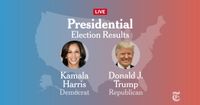
See how your neighborhood voted on our interactive, precinct-level results map of the presidential election. There were 93 electoral votes at stake among the seven swing states.
Donald J. Trump has won the presidency, improving upon his 2020 performance in both red and blue states and capturing enough swing states to reach 270 Electoral College votes.Mr. Trump needed at least 51 electoral votes from these states to secure the presidency.Get live presidential results and maps from every state and county in the 2024 election.The Times published real-time estimates of who would win, based on the reported votes and what we expected from the votes that remained.
Watch video on YouTube: https://youtu.be/WyqiZLgD4Uw?si=TTppvkzRoAi-lMtU · The Electoral College is a process, not a place. The Founding Fathers established it in the Constitution, in part, as a compromise between the election of the President by a vote in Congress and election of the President ...



